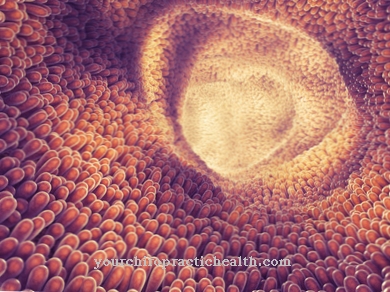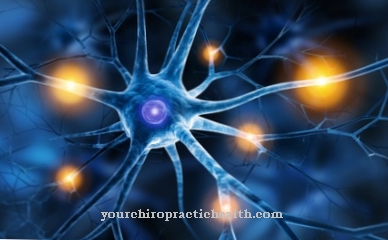The afterbirth refers to the tissue remnants to be released from the uterus after the actual birth process. These are no longer needed after the pregnancy is completed. If these pieces of tissue are not completely removed from the uterus, complications can arise.
What is the afterbirth?

The afterbirth is made up of several components. Since the placenta usually makes up by far the largest part of the afterbirth, a distinction is often made between the placenta and the "rest" of the afterbirth.
After the pregnancy has been successfully completed with the birth, a change in the mother's body takes place, which is initiated by the excretion of the afterbirth.
During pregnancy, the placenta is used to supply the growing embryo with nutrients. It also protects it from harmful environmental influences and provides vital antibodies that the embryo cannot produce itself.
The substances are transported via the umbilical cord between the organisms of mother and child. This means that the placenta is no longer needed after the birth process, with which the newly born infant is detached from the mother's body.
The afterbirth is usually given within the first two hours after the birth. If this does not happen or the afterbirth is only partially released, complications are to be feared.
Function & task
After the pregnancy has been completed, the afterbirth initiates a change in the mother's body. This change is achieved by changing the hormone balance. The hormones produced by the placenta during pregnancy are responsible, among other things, for suppressing menstruation.
The placenta also serves as a filter to protect the embryo from the influence of harmful germs and toxins. But the absorption and processing of toxins and metabolic products excreted by the embryo is also part of the placenta's task.
Once the pregnancy has been completed, the release of the placenta results in a significant change in the hormones that work in the mother's body. During pregnancy, the placenta functions as a kind of additional hormone-producing organ and must be excreted from the body to re-regulate the hormone balance after it has fulfilled this task. In this way the body prepares itself for the now necessary task of feeding the baby.
In addition, the afterbirth also has a cleansing effect. If with the completion of the pregnancy a complete elimination of the now unnecessary If the tissue does not take place, complications often arise that require medical intervention.
On the one hand, the afterbirth concludes the pregnancy by triggering the placenta. On the other hand, it enables the mother's body to slowly return to its pre-pregnancy hormonal state.
The loosening of the mother cake leads, among other things, to the fact that the menstrual period starts again after the pregnancy and the milk production begins. Contrary to what many pregnant women assume, removing the afterbirth after the actual birth is not a mere cleansing process. On the contrary, it also has an important function for the further development of the mother's body.
The placenta is also used in modern medicine. For example, it is used as a basis for the production of drugs or as a source of stem cells. This often makes it possible to obtain stem cells in an ethically indisputable manner in many areas of application. In this way, the placenta released during the afterbirth fulfills numerous tasks not only during pregnancy, but now also in research.
Illnesses & ailments
One of the most common complications in connection with the afterbirth is a lack of or incomplete detachment of the placenta after the actual birth.
For example, a misalignment of the placenta can lead to problems with the afterbirth. This is particularly relevant when the placenta blocks all or part of the birth canal for various reasons.
On the other hand, even with a regular detachment of the placenta, significant bleeding often occurs. This is related to the fact that the remains left in the uterus prevent blood vessels from contracting. The subsequent bleeding that occurs naturally after the birth can be very severe and in some cases even life-threatening.
For this reason, too, it is advisable to have the birth carried out under medical supervision. Such complications are difficult to predict or assess, and timely care can often be crucial here.
Under medical supervision, the missing or incomplete afterbirth is therefore usually helped with medication. In this way, the intensity of the bleeding that occurs can often be reduced considerably. This also significantly reduces the risk to the mother's life.
One of the more harmless irregularities is an unusual shape of the shed placenta. Most of these unusual forms are harmless. A whole host of different appearances of the placenta are known in the medical literature. It should be noted that the unusual shape of the placenta must not impair its function. In most cases, this problem manifests itself during preventive examinations.























.jpg)



